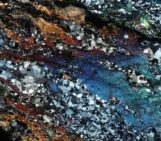
Join our enthusiastic team of social media managers!
We are looking for new people who are interested in joining an enthusiastic team of young researchers to help manage the EGU Geodynamics social media platforms (Facebook and/or Twitter) for the new academic year.
This is an excellent opportunity for early-career researchers to expand their scientific circle while working within the EGU GD team as a ‘social media manager’. This function gives you the opportunity to practice science communication on a regular basis, to be in touch with a large scientific community from around the world, and to boost your own profile, without it being very time-consuming. You will always be up-to-date on the latest research outputs via our awesome blog posts and from the wider geodynamics community. Moreover, you will get the freedom to promote them in your own humour/style. Also, being a social media manager allows you to be in touch with several research groups that advertise job opportunities and relevant conferences/workshops on the EGU GD social media platforms! Below you’ll find quotes from current EGU GD social media managers, on why they chose to become a member of the EGU GD social media team!
If you are interested in joining our team, or if you have any questions, please send an e-mail to:
anna.guelcher@erdw.ethz.ch.
Why did you join the EGU GD social media team?
For me, the most important part of being in the GD team is to be in touch with my fellow researchers and their research updates. It gives an excellent opportunity for networking with young scientists [1]
I relish partaking in the humorous aspects of science communication and connecting with researchers from around the world [2]
I love doing science communication and outreach over twitter because of its limitless potential to reach people across timezones, institutions, career levels and disciplines! Plus it is a fun way to get to know different people, their work and explore new science! [3]
[1] By Jyotirmoy Paul, PhD researcher at the Indian Institute of Science, Bangalore, India. [2] By Charitra Jain, research scientist at the GFZ German Research Centre for Geosciences, Potsdam, Germany. [3] By Antoniette Grima, postdoctoral fellow at the University of Texas, Austin, USA




